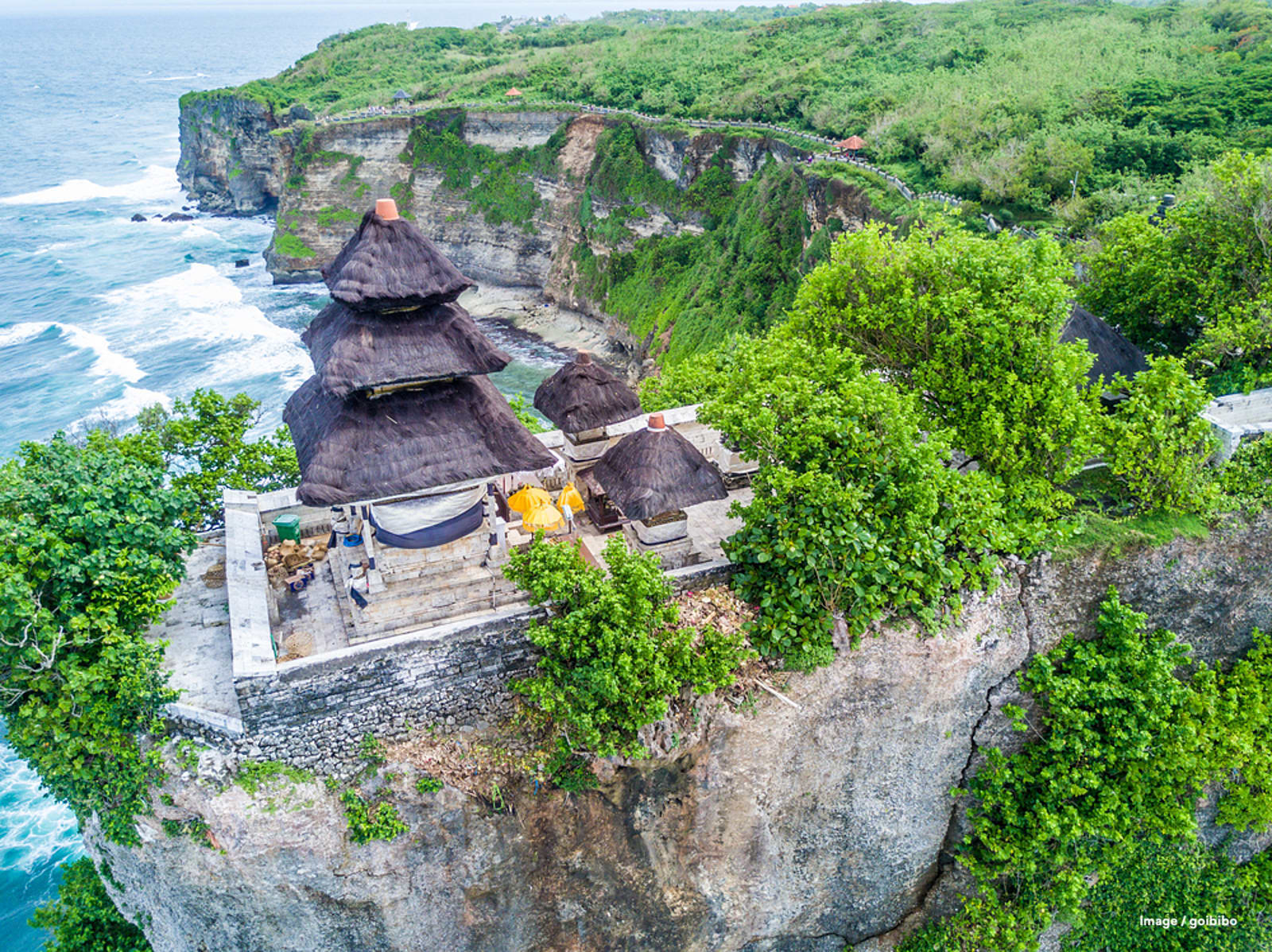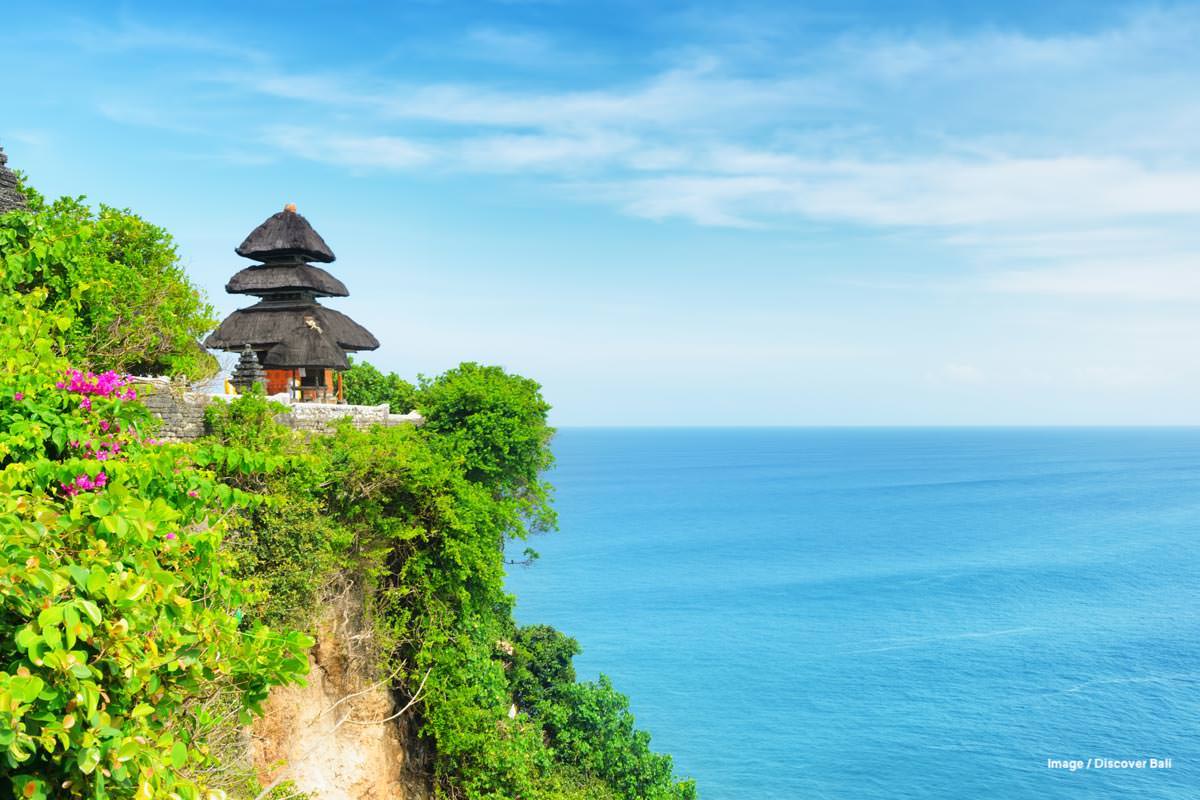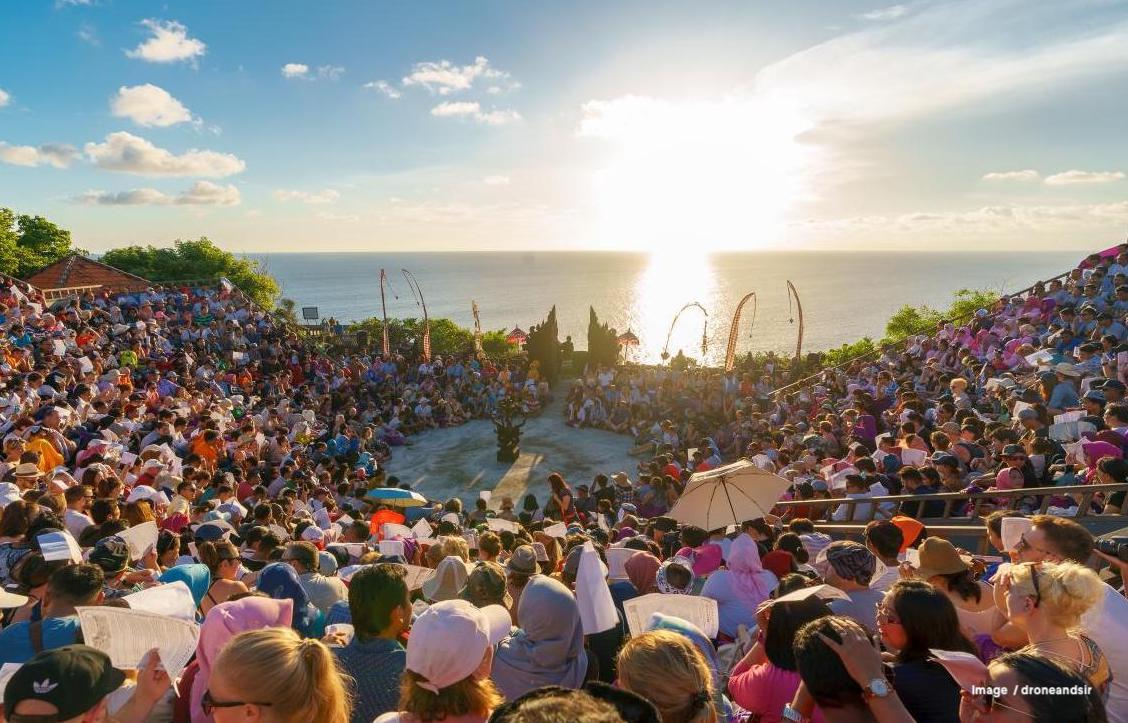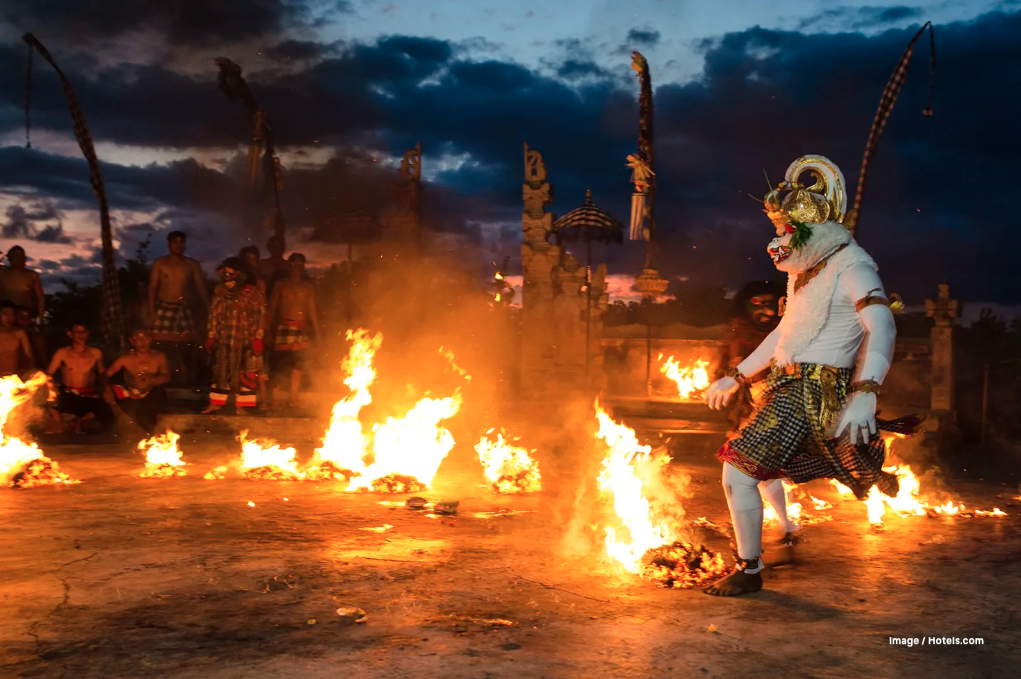What to expect
There’s plenty of space to park on the outskirts of the temple, but a private and arranged charter is highly recommended as there is no official public transportation to get to and from the site and travelling back to your hotel will be difficult without any prearranged ride or taxi — especially if you plan on staying for sunset.
Enter and traverse into the forest where you’ll find an abundance of native monkeys. In local culture, they are believed to guard the temple against bad influences, but in reality, they’re the ones that are prone to bad habits. If given the opportunity, they can and will grab some of your small belongings, so it’s highly advisable that you keep your valuables in a sealed bag or pockets at all times.
The meandering pathway begins to reveal the cliff’s edge that beckons you to continue on a picturesque journey beside the ocean. This walkway, which is fortified by elegant concrete walls on the cliffside, takes around an hour, but the time flies by as you drink in the scenery and take countless pictures of the ever-changing landscape.
Pass an inviting amphitheatre, where you can watch the dramatic Kecak fire dance. As the sun sets during the performance and the sky dims, the story of the famous epic Hindu story of the Ramayana builds to a sensational fire-related climax.
There are two grand and ancient entrances to Uluwatu Temple, one from the south and one from the north. Marvel at the sight of two figures of elephant-headed men guarding the entrance, while the forward-facing parts of the gates are festooned with sculptures featuring flowery patterns. Enter to discover the inner courtyard and botanical hanging trees that provide blissful shade.
Behind the main shrine in one of the courtyards, facing the ocean, lies a Brahmin statue which is considered to be a representation of Dhang Hyang Dwijendra. The Pura Dalem Jurit temple was added in the 16th century and is where you’ll find three more stately statues, one of which depicts Brahma.
The best time to experience Uluwatu Temple is in the evening when the sun goes down to create a wonderful spectrum of colours behind this ancient relic.



